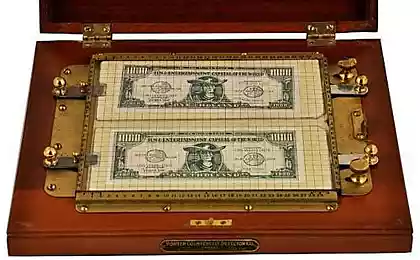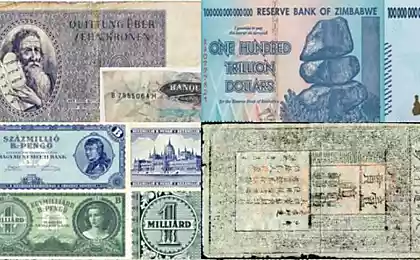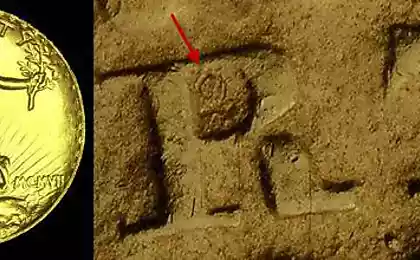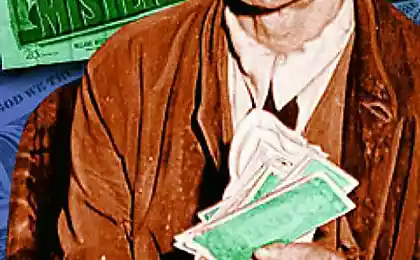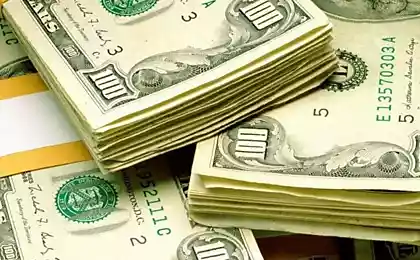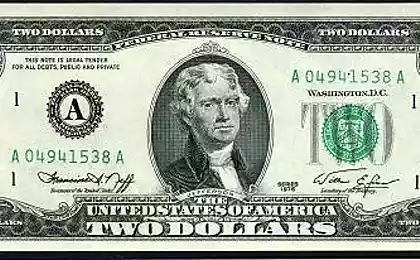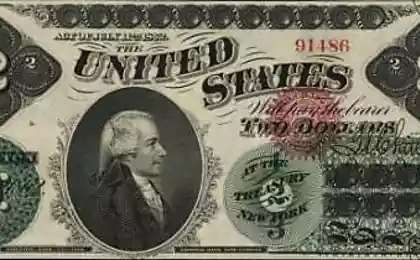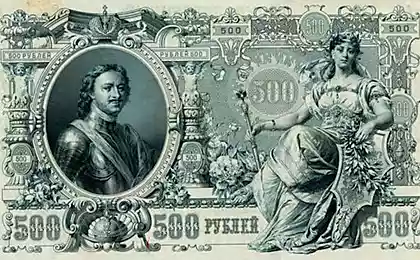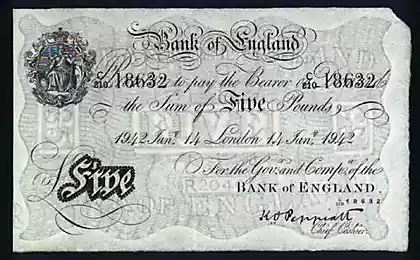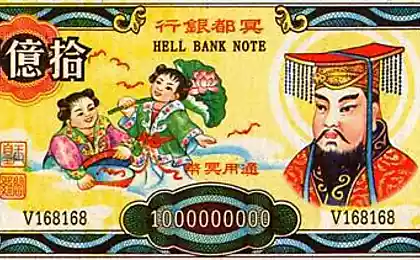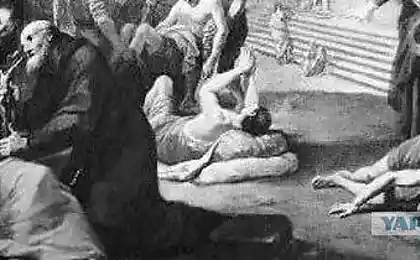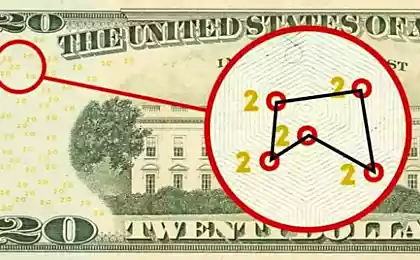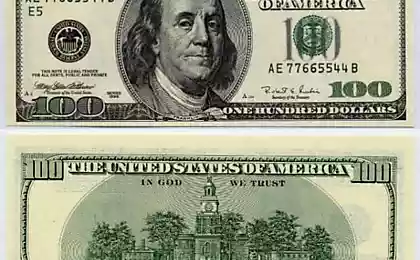759
The strangest in the history of the banknote
Remember I told you about the most beautiful banknotes? Now I will talk about the most bizarre
Banknotes concentration camp (Czech Republic)
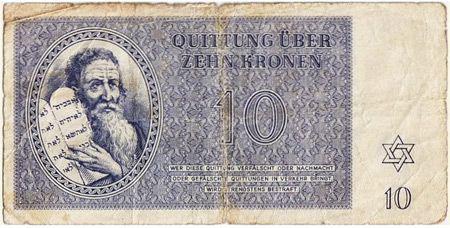
These notes Nazis created for walking inside the Theresienstadt concentration camp, which was located in the former garrison town of Terezin in the Czech Republic, on the banks of the river Ohre. This camp the Nazis considered "exemplary illustrative" - it showed the Red Cross and other international organizations as an example of good treatment of the Jews. It operated a synagogue, lecture halls, publishes magazines, held performances and exhibitions. These notes 10 and 20 crowns, printed on plain paper, have become part of the Red Cross arranged for the showing off, had no real value and have never been used. Banknotes with a cut face of the dictator (Zaire)
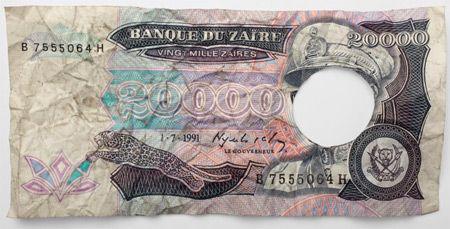
In 1997, the African nation of Zaire (now the Democratic Republic of Congo) overthrew the totalitarian regime of Joseph Mobutu. When the new government was faced with a shortage of cash, they decided to temporarily use the old banknotes of 20 thousand Zaire, cut out of them the image of the dictator.
One hundred trillion dollars (Zimbabwe)
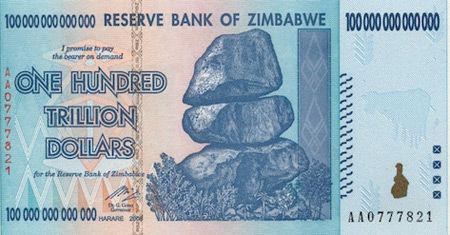
In January 2009, the Reserve Bank of Zimbabwe started issuing banknotes in the local 100 trillion dollars. At this point, the rate of inflation in Zimbabwe has been the highest in the world. The bill, which you see above could be exchanged for $ 300. In July 2008, inflation reached mind-boggling figure of 231 million per cent. Loaf of bread cost 300 billion Zimbabwean dollars.
100 million billion Pengo (Hungary)
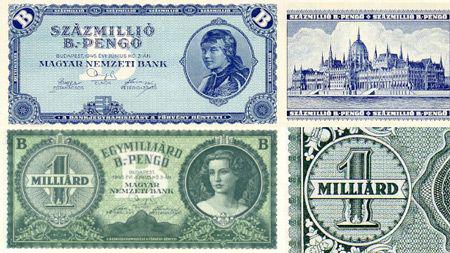
Before World War II Hungarian Pengo experienced the highest inflation rate ever recorded. In 1946, in Hungary there were 100 million banknotes billion Pengo. If the numbers, it would look like this: 100 000 000 000 000 000 000 Pengo. Prices have doubled about every 15 hours, so in July 1946 the Hungarian Government abolished Peng, replacing it with the forint, which remains the official currency of Hungary today. Banknotes, which you see above were actually printed, but never in circulation and were not.
The oldest banknote - 1380 (China)
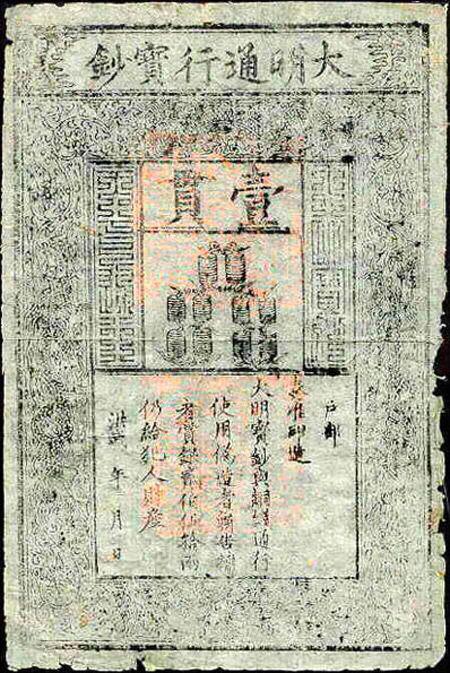
The earliest known use of paper money belongs to China 800s AD. The note, which you see above - the oldest surviving. She was released around 1380.
Banknotes concentration camp (Czech Republic)

These notes Nazis created for walking inside the Theresienstadt concentration camp, which was located in the former garrison town of Terezin in the Czech Republic, on the banks of the river Ohre. This camp the Nazis considered "exemplary illustrative" - it showed the Red Cross and other international organizations as an example of good treatment of the Jews. It operated a synagogue, lecture halls, publishes magazines, held performances and exhibitions. These notes 10 and 20 crowns, printed on plain paper, have become part of the Red Cross arranged for the showing off, had no real value and have never been used. Banknotes with a cut face of the dictator (Zaire)

In 1997, the African nation of Zaire (now the Democratic Republic of Congo) overthrew the totalitarian regime of Joseph Mobutu. When the new government was faced with a shortage of cash, they decided to temporarily use the old banknotes of 20 thousand Zaire, cut out of them the image of the dictator.
One hundred trillion dollars (Zimbabwe)

In January 2009, the Reserve Bank of Zimbabwe started issuing banknotes in the local 100 trillion dollars. At this point, the rate of inflation in Zimbabwe has been the highest in the world. The bill, which you see above could be exchanged for $ 300. In July 2008, inflation reached mind-boggling figure of 231 million per cent. Loaf of bread cost 300 billion Zimbabwean dollars.
100 million billion Pengo (Hungary)

Before World War II Hungarian Pengo experienced the highest inflation rate ever recorded. In 1946, in Hungary there were 100 million banknotes billion Pengo. If the numbers, it would look like this: 100 000 000 000 000 000 000 Pengo. Prices have doubled about every 15 hours, so in July 1946 the Hungarian Government abolished Peng, replacing it with the forint, which remains the official currency of Hungary today. Banknotes, which you see above were actually printed, but never in circulation and were not.
The oldest banknote - 1380 (China)

The earliest known use of paper money belongs to China 800s AD. The note, which you see above - the oldest surviving. She was released around 1380.
